Waggle dancing
A tentative first step in discovering new stories for the table: on growing, eating, and sharing food equitably in a rapidly warming world.
Hello, I’m Emily, and this is a newsletter about how we seek and tell stories to make sense of a rapidly changing world & our personal and collective place in it.
A bee performs the waggle dance when she wants to inform other bees of a nectar source she has found. The waggle occurs on a special dance floor, which is conveniently located near the entrance to facilitate quick entry and exit of foragers, and only bees with news of highly profitable sources of nectar execute the dance. Arriving back at the nest, a bee with news to share immediately proceeds to the dance floor, where other bees waiting for news gather around her. During the waggle, she dances a figure-eight pattern, with a straight "walk" in between the loops and a sporadic fluttering of her wings. #
A surprising taste of sunflower oil
A few years ago at the Culinarium Khasheria in Tbilisi, I tore off a piece of bread and dipped it into a pod of sunflower oil—possibly a little doubtful, possibly wondering if I should ask for olive oil instead. What followed was a moment of surprised comprehension, when you realise that something you’ve always known is only part of your reality, not necessarily another’s.
All my life, I’ve only known sunflower oil as cooking oil. It was what my mother and grandmother used in their kitchens. It was what I used to grease the wok as a child, as I climbed onto a wooden stool to reach the stove so I could fry an egg—the first thing I learned to cook for myself when the adults were out or busy playing mahjong. When I grew older and had to stock my own kitchen in whatever country I was in, I always preferred sesame oil for Asian dishes and olive oil for “Western” dishes. Sunflower was a functional oil, not something you would eat on its own. I never associated a definitive taste to it.
So, the first time I tasted it on its own at Tekuna Gachechiladze’s first restaurant—she’s a chef often credited for kickstarting the city’s contemporary culinary scene—I was wholly unprepared for it. I couldn’t get enough of its brimming nuttiness. And our memories are so deeply enmeshed, such that unraveling one unravels another, and another. As the war in Ukraine broke out, I read about how it could plunge the world further into a food crisis (with effects as far-reaching as here in Southeast Asia) since both Ukraine and Russia are major agricultural exporters including of sunflower oil. I started thinking of the disputed territories of South Ossetia and Abkhazia in Georgia that Russia also stakes some kind of claim on, and the Georgian food I had eaten and loved.
What was so different about Georgia’s sunflower oil? I never tried to find out. Like many Malaysians, I live to eat, not eat to live. And for a long time, I was content simply to take whatever pleasure I could in what I ate, where I ate it, and who I ate it with—all the things that make our most vivid memories.
When I traveled alone, food was often my entry point into cultures entirely new to me. My trip to Tbilisi was the culmination of a trail of crumbs I followed, from a Georgian restaurant in Moscow (its cavernous ambience seared into my memory, but I can’t remember its name) to the always welcoming Little Georgia in East London to, finally, many others in Tbilisi that I’ve pinned on Google Maps with a heart. Any time Georgia comes up, even in passing, I talk, with great enthusiasm, about the food—the khachapuri, the lobiani, the khinkhali, the walnut paste on aubergine—and how they have marked moments of deep satisfaction and camaraderie.
For me, too, food is the tableau upon which families show love when they can’t find the words, upon which conversations meander until you’re the last patrons left in a dimly lit restaurant and new intimacies are forged. It is often how I meet new friends and maintain my current friendships. Sit, eat, talk. We share food, and we share ourselves.
But despite the centrality food has always had in my life, I never felt a strong urge to write about it. I did the occasional food feature when commissioned but never pitched stories myself. I was never interested in doing restaurant reviews, perhaps feeling in it a level of subjectivity too fraught and too unforgiving, happy just to express an enthusiasm for this or that when asked. I also thought I wouldn’t possibly be able to describe taste in so many different ways, and found myself more interested in food history and politics. Yet, I didn’t feel like I necessarily had an eye for those kinds of stories, and they hadn’t felt entirely urgent to me in comparison to other matters—clearly, I see now, an oversight on my part.
Put simply: good food was a joy, a gift, from the people who made it, and I felt no need to demystify it. When I was a child, my father would grin and point out the uncle perspiring through his thin white t-shirt at our favorite nga choy gai stall in Ipoh—serving poached chicken and blanched beansprouts, with kway teow soup—and say, See, how he puts his sweat into it? That’s the secret sauce that can’t be replicated. I would laugh. I was happy just to marvel, and dig in.
These days, that has changed for me, as I sense it has for others too. First, a percolating awareness that how we eat directly impacts our warming planet as the climate crisis began to lead the news agenda, then bulldozed into one’s daily consciousness when the pandemic hit and restaurants and supply chains faltered, thrusting concerns about food security and our long-held assumptions about how we eat into the spotlight.
During this time, we were also reminded how our industrial farming of animals, and not just wet markets hawking wildlife, can create the perfect breeding ground for the spillover of zoonotic disease—such as in 2009, when the H1N1 swine flu circulated pig farms in the U.S. and spread to humans; or a decade earlier, when the Nipah virus from wild fruit bats infected Malaysian pig farms and also jumped into humans. This process is further facilitated by our shrinking forests, which breaks down the buffer zones that would otherwise protect us from the pathogens that wildlife carry, often benign in animals but could infect us with serious disease. Covid-19’s origins, as well as its mode of introduction into the human population, are still being investigated, but at least some of the science has hypothesized that the virus likely originated from wild bats, which was, directly or indirectly, then transmitted to humans.
At the same time, to prevent the spread of disease on overcrowded farms, livestock are routinely pumped with antibiotics. According to one estimate: 73 percent of antimicrobials, including antibiotics, sold globally are used in livestock. This risks making them, and us, even more resistant to them—when antimicrobial resistance is already a leading cause of human deaths, set to take more lives than cancer by 2050 if we continue business as usual.
The more I read, the more I’m finding out how our eating habits play into every aspect of our lives—with important consequences for climate change, our dwindling forests and wildlife, food security, and public health. The more I read, the more I realize how much I never knew about the most basic aspects of our most basic act of survival and how it shapes the world.
But how do we begin to truly inhabit what we know of our present moment, especially when it comes to something so closely linked to our culture, traditions, and identities, where any suggestion of change can be contentious?
Food, climate, and everything in between
Let’s start with this dilemma:
Our global food systems are not only threatened by climate change, they are also a major contributor to climate change.
Earth has warmed by 1.3°C since 1850–1900, i.e. the preindustrial measure we peg this figure against.
In 2015, world leaders pledged under the Paris Climate Agreement to try to limit global heating to 1.5°C to 2°C.
However, the U.N.’s Intergovernmental Panel on Climate Change (IPCC) predicted in its latest report that unless we significantly reduce greenhouse gas emissions in the coming decades, we are likely to hit 1.5°C as early as the 2030s.
A more recent U.N. Environment Programme (UNEP) report also found that there is—according to the present blueprint—“no credible pathway to 1.5°C in place”. The pledges (non-binding) made by governments since COP26 last year will only cut less than one percent of projected 2030 emissions, when 45 percent is needed to keep warming to 1.5°C, or 30 percent to 2°C.
Because of the dire urgency we find ourselves in, many experts are calling for a system-wide transformation across all sectors: electricity, industry, transport, buildings, finance—and definitely not least, food. We’ve been wringing our hands for far too long, and piecemeal tweaks are no longer sufficient.
Why am I focusing on food in this letter?
Because it’s literally what we put into our bodies, and affects us both physically and emotionally.
Because we eat at least three times a day every day and have the power to choose better each time—in a way we can’t so easily, say, choose where our energy comes from. (Yes, corporations are absolutely guilty of passing on their culpability for the world’s problem to consumers, but surely we shouldn’t let that keep us from exercising our choice, which can, and does, influence how our food is made?)
And because, as a 2020 study found, if we continue eating and producing food the way we do—even if we immediately halted all fossil fuel emissions—we would still overshoot 1.5°C by 2050 and 2°C by 2100 on food emissions alone.
At present, our food systems, including the production, processing, transport, and consumption of food, are responsible for a third of the world’s total greenhouse gas emissions. Putting this into perspective: the aviation sector emits just over 2 percent of the world’s total emissions.
More importantly, we have to think beyond emissions. Our food systems also use a disproportionate amount of land and water, which is worrying as the world’s population—projected to reach 10.9 billion by 2100 from, now, 8 billion—grows.
Agriculture already takes up half the world’s habitable surface, while forests make up 37 percent. Of all this farmland, 87 percent is used for food; the rest, biofuels, textile crops, and other non-food uses.
Agriculture is also the leading driver of both forest loss and biodiversity loss globally, causing 90 percent of deforestation and threatening the existence of 86 percent of endangered species. Consider this: 60 percent of all the world’s mammals are livestock, and just 4 percent are wildlife (36 percent are human).
Add to that, too, the fact that agriculture consumes 70 percent of global freshwater withdrawals and causes 78 percent of global ocean and freshwater pollution, and a truly unsustainable picture emerges of how we eat.
Finally, let’s not forget that we end up wasting about a third of all the food we produce, which amounts to at least 8 percent of total global greenhouse gas emissions. That’s emissions we could have done without, as well as emissions from rotting food we waste. That’s why experts are stressing that the solution to food insecurity isn’t increasing food production. We already produce enough to feed the world; it’s our economic and social systems that need to change so we can redistribute food more equitably.
Shouldn’t all this feel galvanizing, especially if you’re someone who thinks of yourself as someone who “follows the science”? However, until very recently there has been a noticeable lack of attention on how our food systems contribute to climate change. Egypt is the first COP to include a dedicated focus on food, though critics say that discussions there are at risk of being captured even further by corporate actors to the detriment of the world’s small-scale farmers.
The cow in the room
Like it or not, animal agriculture plays an outsized part in the climate impacts of the food system.
Of total global agricultural emissions, animal-based foods contribute 57 percent, while plant-based foods contribute 29 percent, according to a 2021 study by Xiaoming Lu et al.
In a 2018 study based on data from roughly 38,700 farms in 119 countries, Poore and Nemecek also found a large variability in environmental impact between different farms producing the same product, but concluded that even the lowest-impact meat, dairy, or aquaculture products still cause more environmental harm than the highest-impact vegetable or cereal.
They also estimate that the production of meat, aquaculture, eggs, and dairy—including livestock grazing and growing animal feed crops—occupies roughly 83 percent of the world’s agricultural land.
In fact, a substantial 41 percent of the world’s cereals—and 77 percent of global soy production—goes to feeding animals, not humans directly. Just 7 percent of soy is used directly for human food products.
Yet, despite how much of our natural resources it guzzles up, animal agriculture only produces 18 percent of the world’s calories and 37 percent of total protein. For every 100 calories you feed a cow, you only get two calories of beef back; for poultry, 13 calories for every 100 calories. It also takes 100 times more land to produce a kilocalorie of beef than a kilocalorie of plant-based foods; same for a gram of protein. This is hardly efficient.
There is one silver lining in all this, though. Given how big an impact our food systems have on climate change, our transformation of it—if we can muster the will to do so—can become an important way to mitigate climate change.
There are people working to make burping and farting cows more climate-friendly by tweaking their feed—like Jan Dutkiewicz, I am, however, skeptical about this one because it doesn’t address, beyond emissions, cattle’s glaring land usage problem—and technological innovations can and should continue to be developed as a halfway measure to push for longer-term change. However, as Hilal Elver, a former U.N. Human Rights Office’s Special Rapporteur on the right to food, concluded in a 2015 report: “The world’s current consumption pattern of meat and dairy products is a major driver of climate change and climate change can only be effectively addressed if demand for these products is reduced.”
She also recommended that “nations with emerging economies must increase awareness of the implications of meat consumption, while developed countries should demonstrate a willingness to modify consumption behavior and avoid food waste”. This seems diplomatically worded to take into account the historical and existing inequities between countries, while keeping in mind that as a country gets richer, its appetite for meat also increases. So, may I offer a gentle reminder here that no one is saying that indigenous or indigent communities who depend on hunting or breeding animals to survive, or who have no easy alternative access to protein, should stop eating meat? Also, isn’t a little disingenuous when someone who lives in the city and shops at supermarkets offers up these communities as the reason to continue as they always have?
For illustrative purposes: Poore and Nemecek found that cutting animal-based products from our current diets could reduce food production’s land use by 76 percent, even as plant-based equivalents are cultivated in their place to feed the world. Assuming we don’t get that far, even halving the use of animal-based products could reduce land use by 67 percent.
Taking all this into account, the call to reduce meat intake by those who have the choice to is surely not a radical proposition. Yet, I’ve listened in on climate panel discussions, especially where meat industry representatives are present, where any suggestion of it is simply avoided with no pushback at all. In the IPCC’s most recent report, governments were still trying to water down scientists’ recommendations on cutting meat consumption.
I know I’ve rattled off a lot of sweeping figures here. They’re just a place to begin to connect the dots, with each figure encompassing whole other sets of analyses; and being global calculations they, of course, overlook local variations. One thing Lu et al found in their study: South and Southeast Asia are the only regions in the world where plant-based greenhouse gas emissions are larger than animal-based emissions, due in part to rice cultivation—the largest emitter among plant-based foods. Necessary work is being done to figure out how to green the rice we eat, since it’s a staple food for so many people in the world, and a different set of approaches will be needed in these regions compared to in developed nations. But we should also keep in mind that there are other considerations beyond just emissions, such as land use in a finite world, and the fact that meat consumption tends to increase as countries develop.
In any case, given how entangled we all are, it would be a mistake to think that some of us can claim not to be implicated by detrimental food practices happening elsewhere. We consume imported food, we travel, some of us live abroad for some period of our lives. The big picture also matters. And unfairly, given the distributional imbalances of our hyper-globalized world, it’s the poor who are most vulnerable to the environmental impacts largely caused by the rich.
A glimpse of the inequities we’re talking about: the world’s ten most food-insecure countries collectively generate just 0.08% of total global carbon emissions. That’s not yet even taking into account the historical emissions of developed countries and the responsibility they ought to shoulder for that.
So, what does all this mean for how we grow, eat, and share food equitably in a rapidly warming world?
Searching for a place to begin writing
These thoughts have been creeping around the peripheries of my brain for the past two years. The difficulty I often feel as a writer is that I’ll find something interesting, but not yet quite know what to do with it. Sometimes, I wonder how far I should let myself go down a road that begins beckoning to me. What if I lose interest halfway and it turns out to be a false start? Then again, what if it turns out to be a road I want to keep going down, the more steps I take? I’m beginning to learn that sometimes, the act of doing itself builds motivation.
The other day, I was reading the newsletter of another writer. She writes without hang-ups about how she switches directions—from thinking she’ll be based in another foreign city to moving home three months later, from thinking she’ll be writing environmental stories during the pandemic to writing personal stories informed by grief. And I thought, why not? Is all writing not a quest? If you have a curious mind you’ll have multiple possible lines of inquiry, and you choose the one that most compels you at any one time. Maybe it’ll lead to a story. Or maybe all it does is shift something in your mind, helps you reframe how you think about the world, and that would be enough. When I feel paralyzed, I remind myself that I can’t possibly go wrong with reading. I try to trust that whatever I learn will make its way into whatever I do, eventually.
Now, having read just that little bit more, I feel the impulse to reorient more of my explorations around the climate crisis. I’ve covered environmental stories before, but in a piecemeal, unsustained effort, and mostly where human rights, needs, and wants take center stage. Of course, the climate crisis is often a story about the pursuit of justice for marginalized human communities, but it also forces us to look in a deeper way at how we relate to the natural world and other lifeforms that surround us, nurture us. It forces us to imagine the threats we may not be able to see or recognize until it is too late, at a time where we seem to be having, as Amitav Ghosh wrote, a crisis of the imagination.
Not so surprisingly, it was during the pandemic’s lockdowns that I grew into this desire—of wanting to be more in touch with the physical world, even as, at the same time, I found it more difficult than ever. Where I mostly reported from the ground before, I was suddenly talking to sources on the phone or via Zoom. Isolated by the comfort of my desk and the cacophonous omnipresence of social media, I found myself in a mental bog of ideas—not all ideas illuminate; some befuddle, some distort. My mind is a place I can get lost in, and poor W.C. often has to prose me out of its thickets, to remind me where I am and that other things matter besides what I am thinking about. I often retreat into a tunnel zone of focus, which he alternately admires and despairs of, and from which it’s difficult to retrieve me from. But it doesn’t always feel like focus. Sometimes, it feels like I literally can’t see the forest for the trees.
So, emerging from the pandemic’s second year, I told myself that, as an antidote, I would attempt to inhabit a state of being I called a “grounded levity”. I want to engage more with my physical surroundings—light-heartedly, playfully, even. I want to hold on more to what’s tangible and elemental. And what is more elemental than what you eat, what grows from the ground, what keeps you alive?
For me, it’s food that has finally connected me to my surroundings on a more visceral level. It’s food I’ve gravitated to as a lens through which to explore deeper questions about how we live alongside the natural world. Because knowing isn’t enough, knowing is just the beginning of a long journey; and I guess mine started when I realized how much beef I was routinely eating despite the environmental destruction it causes, and how much we waste and overlook in the course of elevating our desire to have “the best” and most varied food experiences above all other considerations when we eat. I started making efforts to cut back on beef in 2019, and then, more concertedly, other animal products. In doing so, I’ve slowly become more aware of how how I eat affects the world around me, and more and more excited about other possibilities of “good food”; there is so much more in the world we haven’t eaten that doesn’t involve snuffing out a sentient life. What began as an act of abstention has evolved into an act of discovery.
Surrounded by so much teeming green in a place like Malaysia, its jungles oozing with leeches, it can be easy to forget that the planet is in dire straits, even as we hear about the seemingly endless series of land grabs and deforestation—especially during the pandemic when there were fewer eyes and boots on the ground. At dinner some weeks back, as a friend urged another friend to finish what little was left of her food instead of taking it away because of the packaging it would require, another friend said, a little impatiently, “Look, every person has their own environmental journey to make.” And it’s true: people have to come to their own views of the world. I know, because I’ve taken my time.
But equally, people can only come to any kind of realization for themselves when they possess enabling knowledge. None of us, since we presumably all pride ourselves on our independent minds, like to be told to just do anything, much less because it’s the “right” thing to do. We want to know why, to air our own doubts and wrestle with them and come to our own conclusions; and here, we finally have an opportune occasion—an open road, really—to explore.
Living fully in our present world, as we all surely desire to do, is an unavoidably messy business: eating even more so, even as it is also one of life’s simplest pleasures. But it’s this very messiness, I think, that invites reflection—and imagination. I have so many questions about the history and future of food and how the system actually works before something makes its way to our plates, and it feels really rewarding to just go about trying to find answers to them, and to ask deeper questions about how we live in, how we are part of, the natural world.
In doing so, I want to keep in mind not just how we wish our world to be, but also to engage with how it presently is—no matter how compromised by our own past actions—in hopes of arriving at a better place. I guess I have always been more comfortable dwelling between open questions than in absolute answers.

Coming back to that sunflower oil
Now, years after my trip to Georgia, I want to know what was so different about that sunflower oil. I didn’t find too much Googling around, but I did stumble across a podcast featuring Olia Hercules, a Ukrainian chef and food writer based in London, speaking briefly about Ukrainian sunflower oil (not Georgian, but I’m just quoting her story to make a point here):
Well, I don’t know if it’s necessarily unique—I think they do have it in France and obviously in other eastern European countries, but it is of such high quality, the unrefined sunflower oil, and it’s something that we use a lot as a finishing oil, both on fresh salads and also on your fermented vegetables in winter. It tastes like pressed, toasted sunflower seeds. And it’s incredible. It has almost the same intensity as a sesame oil would have, you know, in that kind of like nutty and rounded and sweet [taste] and this really dark and amber colour. It’s such a beautiful oil.
But you know what, for ages in the nineties after the Soviet Union broke up, everybody went off it. They were like, Oh sunflower oil, it’s so common. Everybody just suddenly got into very bad-quality olive oil. Suddenly, everyone was using olive oil. Now, recently in the past ten years, people were like, wait a minute, we’ve got this amazing produce and this amazing oil, why did we stop using that? I remember my mom, there was just a point where she went, Uhh, this olive oil is actually… it can be very amazing, but what we get in Ukraine is not very good quality, why are we not using what we’ve got growing in our backyard?
It’s a reminder of how much global trade has changed how we eat and what we eat, and the extent to which we’re all connected. You’ve already read about—or felt—how the war in Ukraine is ratcheting up food and fertilizer prices around the world, coming right off the back of Covid-19 and exacerbated by climate change and existing social inequities. Together, Ukraine and Russia supply about thirty percent of the world’s wheat needs. Ukraine is also the world’s largest producer and exporter of sunflower oil, with Russia ranking a close second.
Brought from Mexico to Europe in the early seventeenth century, sunflowers were cultivated in Ukraine from the mid-eighteenth century. These days, they are typically planted in April and harvested from mid-September to mid-October, predominantly in the southern and eastern regions of Ukraine—the hardest hit by war today. It’s fair to say they won’t be planted in the usual ritual this year.
In the early days after the outbreak of war, you would have seen the video of a defiant Ukrainian woman confronting an armed Russian soldier, telling him to put a handful of sunflower seeds in his pockets so they will grow when he dies on Ukrainian soil. Heard one way, it sounds like a chilling curse. Heard another way, it sounds like a strangely haunting benediction.
It makes me imagine a field of undulating sunflowers somewhere in Pervomaysk, southern Ukraine, where a nuclear missile base once stood. There, in June 1996, the American, Russian, and Ukrainian defense ministers had planted sunflowers to formally mark Ukraine’s complete nuclear disarmament. Until then, it had possessed the world’s third-largest nuclear arsenal, which it had inherited in 1991 after the collapse of the Soviet Union.
Aside from its symbolism, the sunflower also shows us how nature can heal itself, given the right mix of circumstances. In 1986, in the wake of the Chernobyl Nuclear Power Plant explosion in Ukraine, a group of scientists planted sunflowers in the surrounding area. They scattered the seeds over the desecrated land and waited for the flowers to reach into the sky, drawing radiation out of the soil as they grew. Once the sunflowers had absorbed the poison from the land, they were harvested. More sunflower seeds were scattered.
The scientists did this with the hope that, in time, the land would return to some semblance of its crude self. So that it could hold life again.
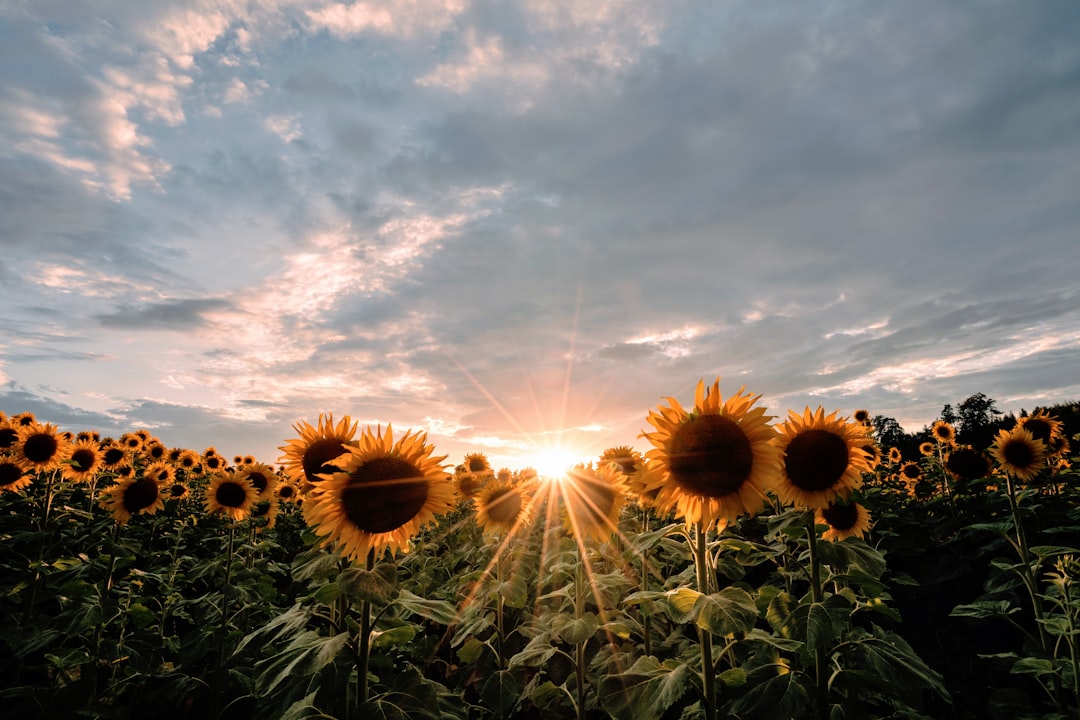
I hope this changes, a tiny bit, how you see the world.
E.



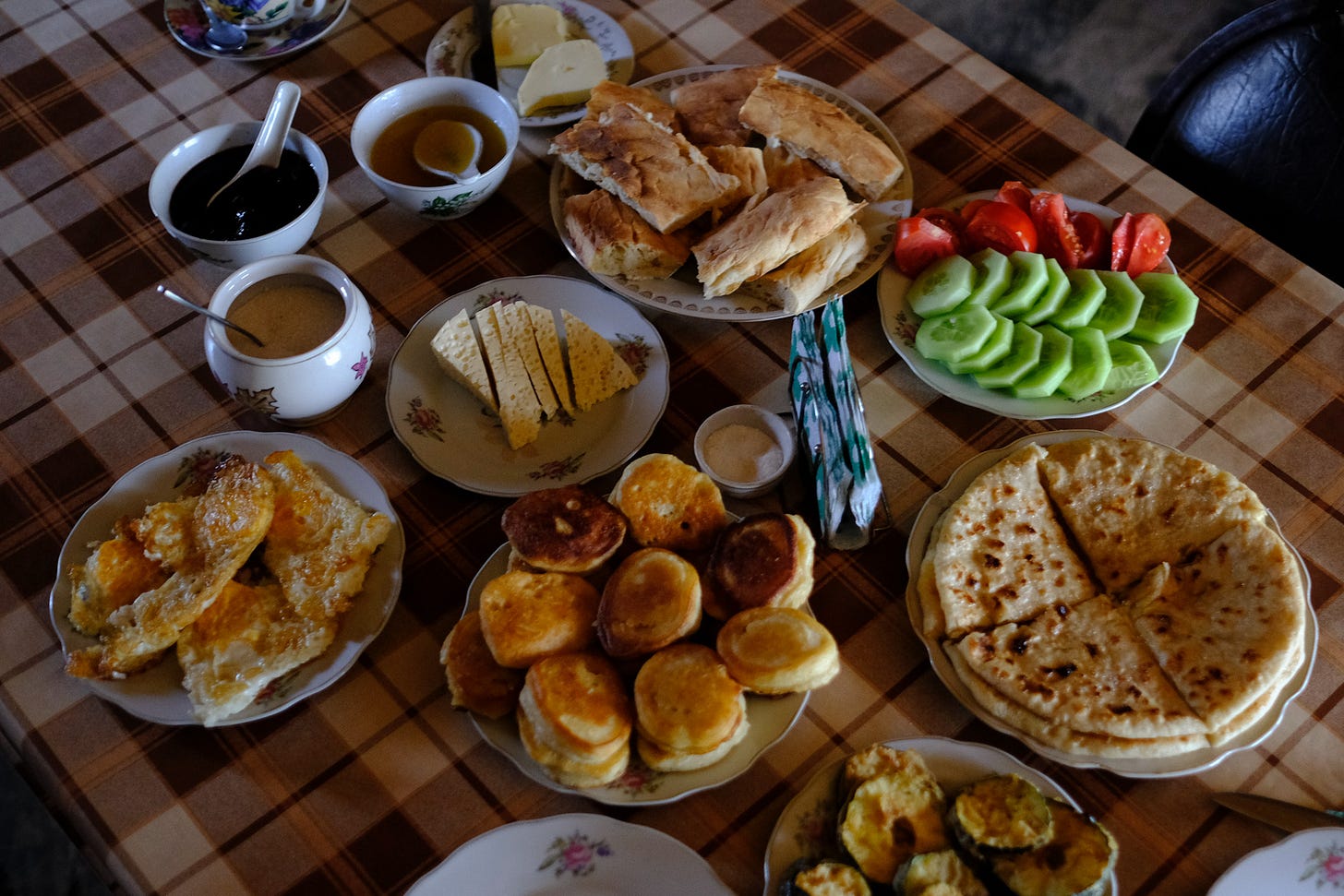
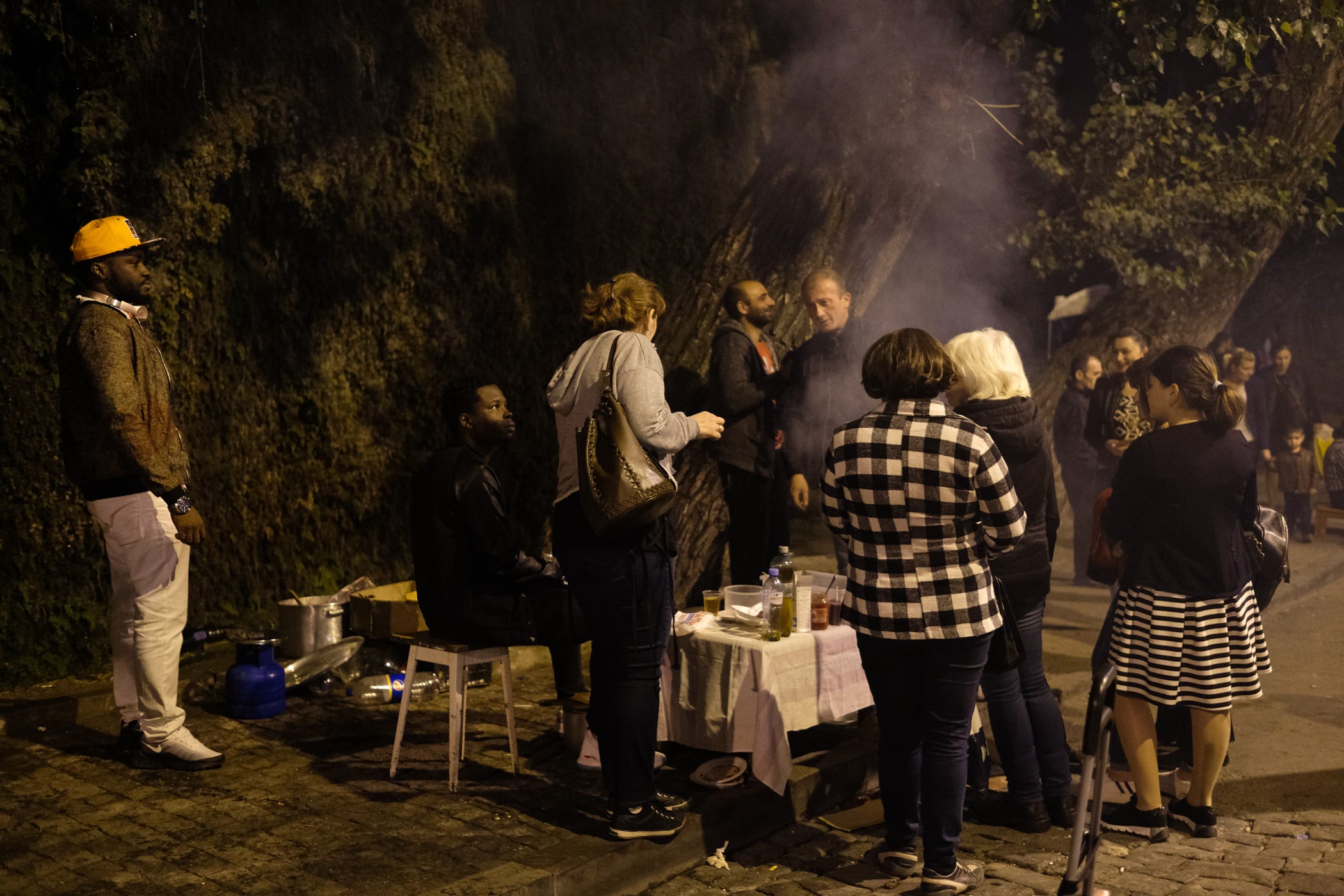
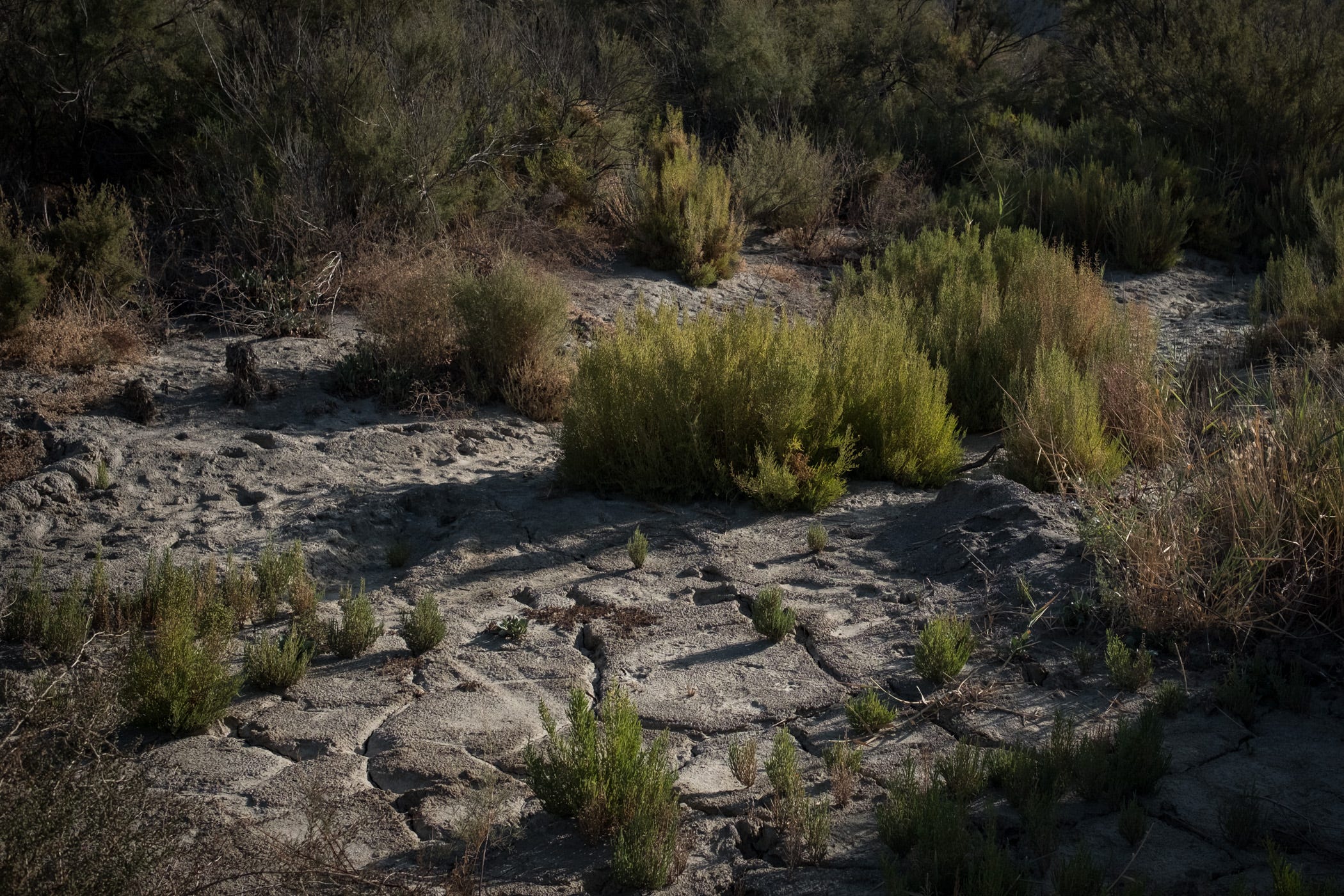
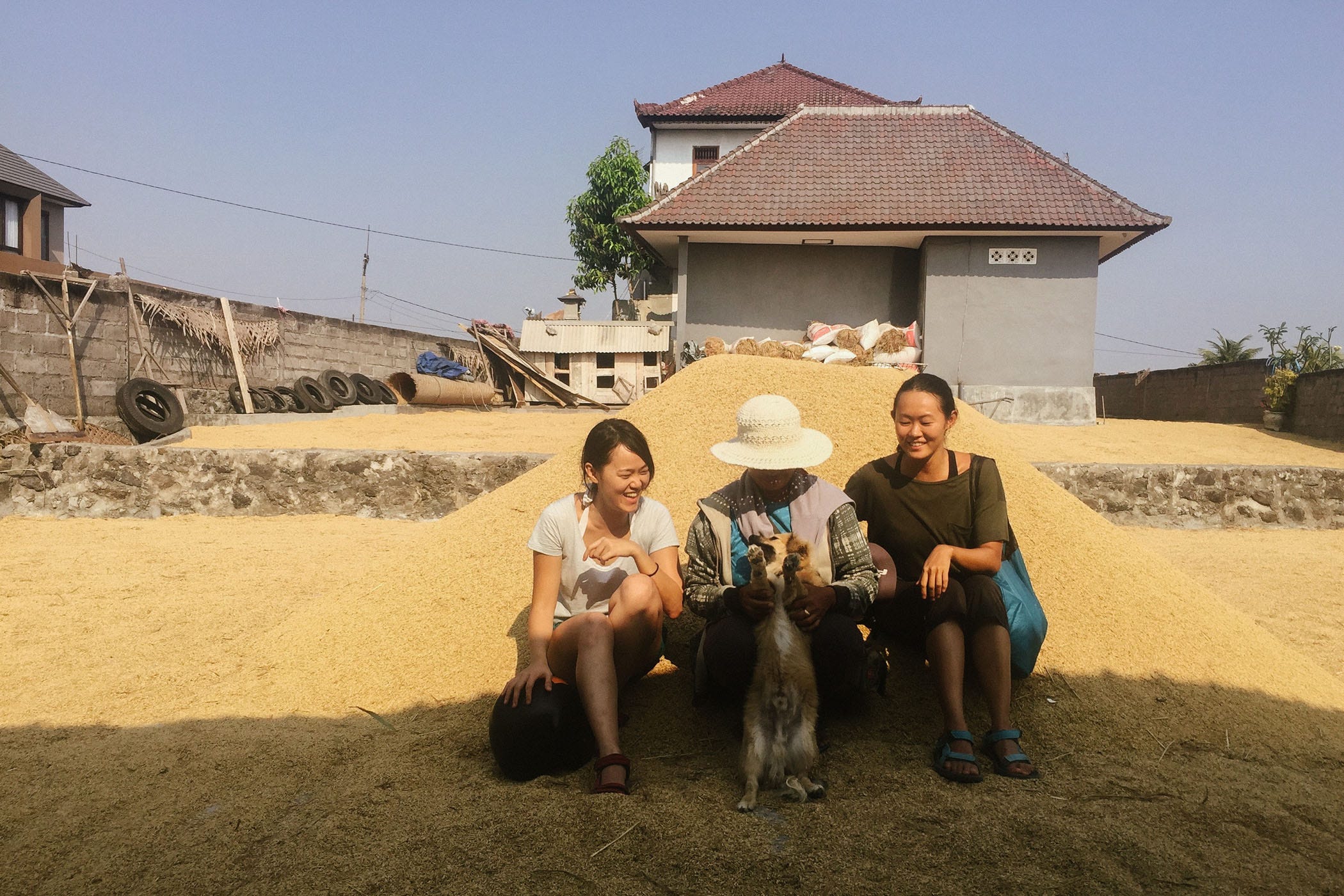

Thank you for a beautifully written and important article. This is definitely something that needs to be on more people's minds. And as dire as the situation is and as shocking as those numbers can be- on the matter of what we eat, we as normal people can have a real and tangible impact. Which, if not uplifting, is at least empowering!